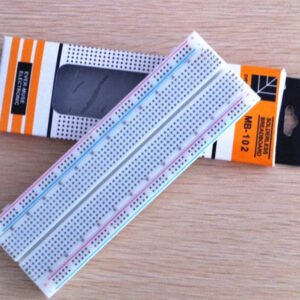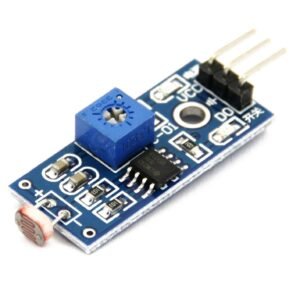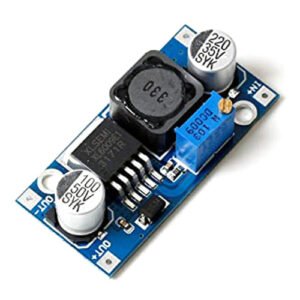Arduino, Education
harduino Uno Rev3
The harduino UNO is the best board to get started with electronics and coding.
If this is your first experience tinkering with the platform, the UNO is the most robust board you can start playing with.
The UNO is the most used and documented board of the whole Arduino family.
1,000 L 1,200 L
Everything You Need to Know About harduino Uno Rev3 The Arduino Uno Rev3 is a versatile and compact microcontroller board that makes building digital devices simple and accessible. It runs on the ATmega328P microprocessor, providing reliable performance and compatibility with various sensors and modules. This board is perfect for creating a wide range of projects, from robotics to home automation.
The Arduino Uno is a popular microcontroller board based on the ATmega328P chip. It's widely used for learning and prototyping with electronics, as well as in many DIY projects. Below are some key details about the Arduino Uno: Key Features:
-
Microcontroller: ATmega328P
-
Digital I/O Pins: 14 (6 of which can be used as PWM outputs)
-
Analog Input Pins: 6
-
Flash Memory: 32 KB (of which 0.5 KB is used by the bootloader)
-
SRAM: 2 KB
-
EEPROM: 1 KB
-
Clock Speed: 16 MHz
-
Operating Voltage: 5V
-
Input Voltage (recommended): 7-12V
-
Input Voltage (limits): 6-20V
-
USB Connection: Used for powering and programming the board
-
Communication: UART, SPI, I2C
-
Programming: The board is programmed through the Arduino IDE using C++-based code.
Board Overview: The Arduino Uno is equipped with several input/output pins that you can use to interact with sensors, actuators, and other devices. It supports communication protocols like Serial (UART), I2C, and SPI, which make it ideal for working with different kinds of peripherals. Key Components:
-
Power Jack: Used to supply power to the board if not powered via USB.
-
USB Connection: To upload code and provide power from a PC or laptop.
-
Reset Button: Allows you to reset the board, often used when uploading new code.
-
LEDs: There are built-in LEDs for power (on the board) and for pin 13, useful for basic tests.
-
Voltage Regulator: Converts the input voltage to the 5V required for the microcontroller.
-
ICSP (In-Circuit Serial Programming) Header: Used for direct programming of the microcontroller.
-
Arduino Bootloader: A small program pre-installed on the board that allows you to upload your sketches via the USB connection.
Programming: You write programs for the Arduino using the Arduino IDE, which uses a simplified version of C/C++. Programs (known as "sketches") are written in a loop structure, with two main functions:
-
setup(): Code inside this function runs once when the Arduino is powered on or reset.
-
loop(): Code inside this function runs continuously after setup, repeatedly.
Common Uses:
-
Prototyping: Quickly create electronic prototypes.
-
Robotics: Arduino Uno is often used as the brain for simple robots.
-
Home Automation: Control devices like lights, fans, and other appliances.
-
Learning Electronics: The board provides an accessible platform to learn the fundamentals of electronics.
-
Interactive Projects: Use sensors and actuators to create interactive installations or devices.
If you're starting with Arduino, the Uno is a great choice due to its versatility, ease of use, and a large community of users and resources.








There are no reviews yet.